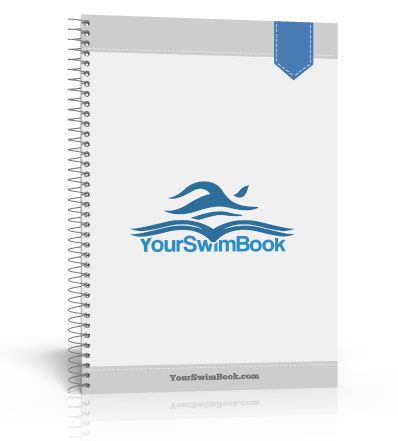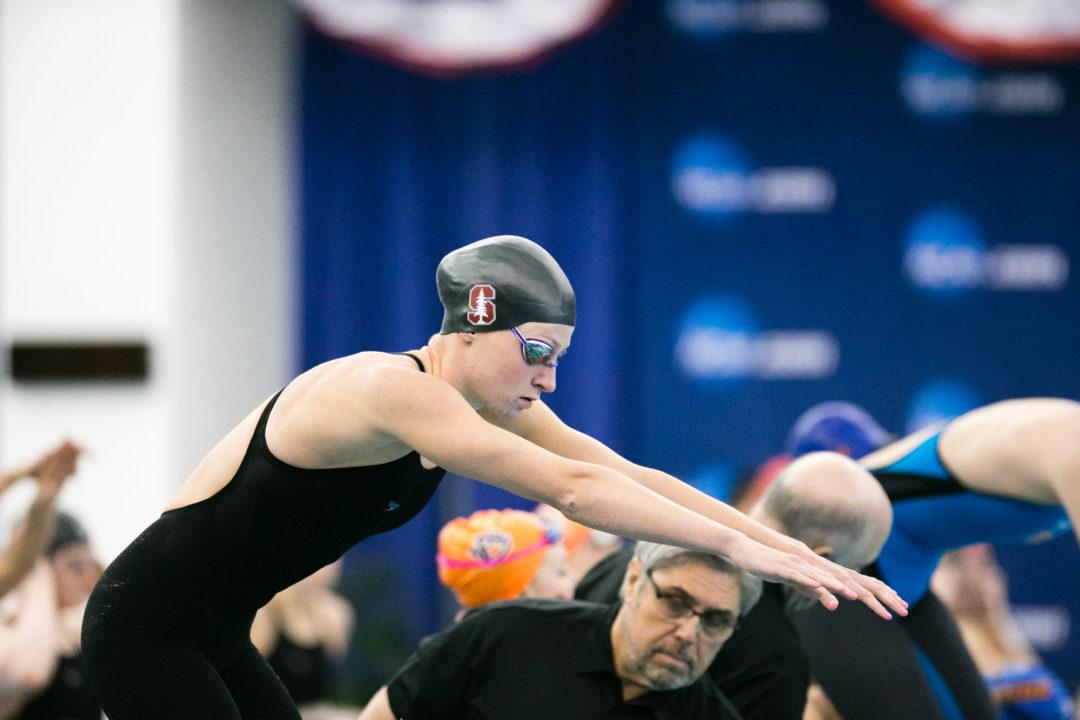by Olivier Poirier-Leroy. Join his weekly motivational newsletter for competitive swimmers by clicking here.
Writing out your workouts is one of the most powerful things you can do in order to become a faster swimmer. Here are 5 less-talked-about benefits to writing out your swim practices.
When it comes to achieving that one thing we all want in the water—becoming insanely fast—writing out your swim workouts is as simple, and as powerful as it gets.
The reasons for doing so are well known among those who practice this simple and powerful way to max out performance: you have more consistent workouts, you stay motivated, and it gives you valuable self-awareness.
Athletes such as Michael Phelps, American distance great Janet Evans, and current US Olympic stars Caeleb Dressel and Katie Ledecky have all used this old-school tool to become smarter, faster swimmers.
Here are five more things that happen when you start writing out your swim workouts in a log book.
1. Learn to value the process.
At some point you’ve probably heard a coach tell you to “trust the process.”
This is because process-oriented goal-setters are way more likely to achieve big things in the long run.
By focusing energy, both physical and mental, on being great each day, instead of foxating on results that aren’t always in your control, you actually relieve yourself of a lot of performance-related anxiety that debilitates and stalls swimmers.
Writing out your swim practices teaches you to be a great practice swimmer. To value and appreciate the daily process of improvement.
Each day you have a couple moments with which you reflect on the workout, assess how you did, and learn the lessons of the day. Over the course of doing this over the weeks and months of training you better appreciate and value how progress is made in the pool.
2. It shows you how powerful the “I know, I know” stuff is.
I get emails every day from swimmers asking me how to get faster. How to improve so that they can improve their goals.
The answer always starts with the basics: swimming with proper technique, eating well, and getting lots of sleep.
Or as I like to call them, the “I know, I know” stuff.
They are the things that every swimmer knows is super critical to performance. There is no “secret”—it’s absolutely crushing the fundamentals of high performance.
Let’s take sleep, for instance.
Sleep, in the words of super-spy Jason Bourne, is a weapon.
And a well-rested swimmer is an athlete who is ready to unleash the full capacity of their focus and abilities on a regular basis.
And if you are serious about kicking chlorinated butt in your swim workouts, then get serious about your sleep patterns. Step one in doing this is actually measuring how much sleep you are getting (you can’t change what you can’t measure), and writing it down in your log book.
3. It’s a helpful tool for your swim coach.
Every swimmer on the planet has heard of Katie Ledecky. Her accomplishments in the pool and her tenacity in training have reached legendary status.
One of my favorite stories about her is from when she was a relative unknown age grouper swimming with NCAP in 2011, long before any of the world records or Olympic gold medals.
Her coach at the time, Yuri Suguiyama, encouraged her to start using a log book to track her training, her goals, even start a gratitude list. Perhaps most critically, she also started writing out more of her thoughts on her swimming, how she felt about particular sets, or how she was feeling.
“Every single day write down your wellness on a scale of 1 to 10, your nutrition, how well you sleep, how well you slept the night before and something special you did that day,” he recounts telling Ledecky in an interview with American Swimming magazine.
For Suguiyama this became a vital communication tool between coach and athlete, and better helped inform his coaching as Ledecky swam her way onto the 2012 US Olympic Team.
Your training journal is more than just a set of results—it should also reflect your full journey and experience as a high performance athlete.
We don’t always feel tremendously forthcoming when our coaches ask us how we are feeling or about a particular set during practice in front of the squad, so having a place where we can comfortably provide feedback to our coach provides a powerful way of helping your coach coach you better.
4. It gives you ownership of your swimming.
One of the more frustrating reactions from athletes is when they begin to look outwards to explain poor performances.
Elite swimmers are accountable to themselves for their swimming.
This kind of ownership means that they accept full responsibility for their performance. For how they warm-up. For how much focus they place on their technique during long recovery sets. For how they fuel themselves before and after practice.
Here are just two of the things you can do to develop more accountability to yourself and your swimming:
- Writing out training goals. Set mini-goals for the week. These will help you stay focused on the things that matter, particularly during those heavy weeks of training when you aren’t feeling as fast as usual.
- Rank your effort. If there is one thing you should pick up from this article, whether you start writing out your workouts or not, it’s that you should grade your workouts every day. It takes 3 seconds to write out a letter grade or number ranking. I can’t count how many workouts I’ve saved from knowing I’d be grading my effort afterwards. It’ll keep ya honest.
5. It teaches you what it takes to improve.
Unrealistic expectations are a motivation slayer. While they may start under the naïve guise of big, hopeful dreams they inevitably implode on themselves, leaving swimmers feeling unmotivated and demoralized.
I’ve seen it more times than I care to count (and experienced it myself on more than a few occasions)…
We make a big goal. White-knuckle it for a couple weeks. And then find ourselves super bummed when we haven’t improved at the rate we expected or hoped to. And so we give up.
A training history, and writing out your workouts, help you create more realistic expectation by showing you what it takes to improve.
You might not like how much work is going to be involved to see what it will take to achieve those monster goals of yours—but knowing is critical if you are serious about wanting to pummel those goals.
ABOUT YOURSWIMBOOK
YourSwimBook is the ultimate log book and goal setting guide for competitive swimmers.
It was designed for swimmers, by swimmers, and features a ten month log book, comprehensive goal setting section, monthly evaluations to be filled out with your coach, and more.
**New: Now included is also a 76-page mental training skills eBook called “Dominate the Pool.”
Click here today and learn how YourSwimBook will help you swim faster this season.
